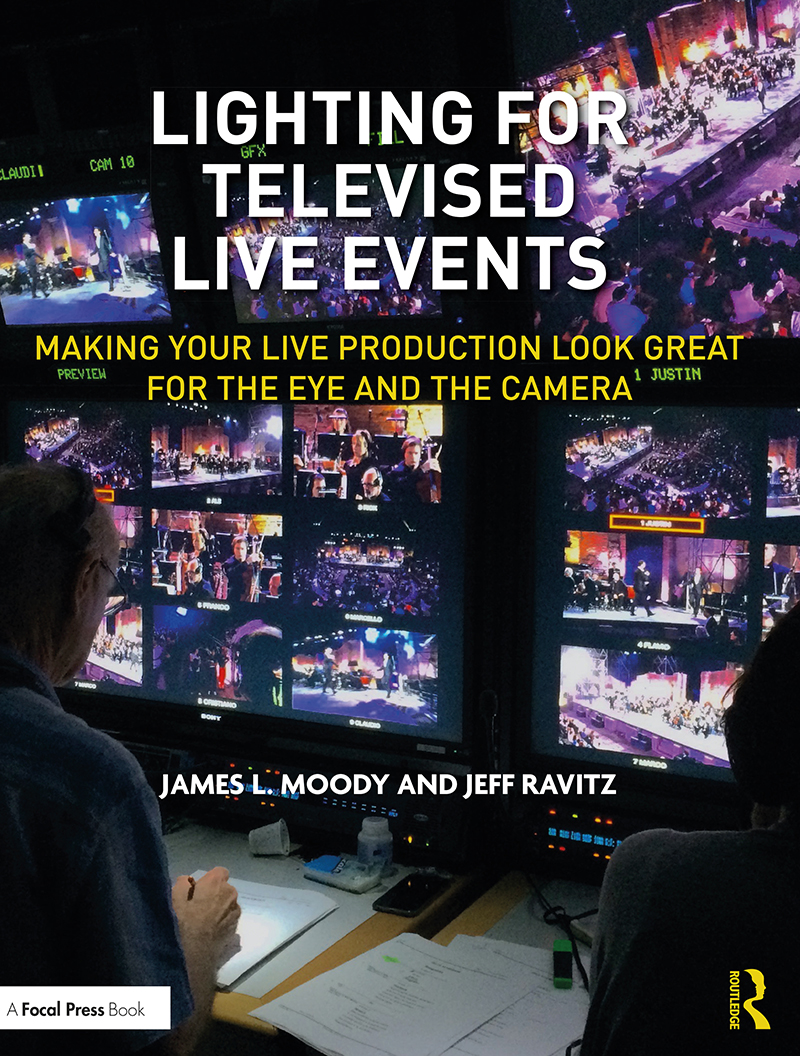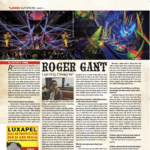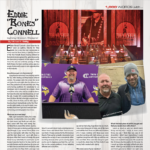
Renowned lighting designers James Moody and Jeff Ravitz have both had illustrious careers lighting concerts, television and live events. They certainly have a wealth of earned wisdom between them and luckily for readers they are willing to share that knowledge. In fact, Moody’s previous books — Concert Lighting, The Art and Business of Entertainment Lighting and The Business of Theatrical Design — each have multiple editions. For this new book — Lighting for Televised Live Events: Making Your Live Production Look Great for the Eye and the Camera — he has teamed up with Ravitz as co-writer. The book looks at the techniques and unique issues of lighting for live events and productions that are also being shot for broadcast, webcast, or I-Mag. They also include thoughts and contributions from fellow designers including Bob Barnhart, Bernie Davis, Bill Klages, Allen Branton and Alan Adelman, among others. It is well worth a read as most lighting designers will encounter a camera on almost all live productions today, including theater.
PLSN: The book speaks to a wide audience, whether you are a student, a designer at the early career stage, or already established but looking to better understand lighting for the camera. Who do you hope reads the book?
James Moody: It’s not just for students, it’s also for the professional who wants to expand their ability to work in joint areas. The large-screen video magnification is everywhere now from Broadway shows to corporate shows to concerts and festivals; the whole gamut. We’re seeing these screens purvey in virtually every market. As I said, even on Broadway lighting designers are not able to avoid the screens either in the show or cameras when they are produced for video. And many of the theater designers that I talked to said it was all new to them. So this is a perfect book for them to get more understanding of this topic.
Jeff Ravitz: Most of the shows that theatrical lighting designers are working on today are very likely to be captured on camera at some point, or as we’ve seen in the last year, shared with an audience as a live stream from the theater. Those theater designers will want to know how to preserve the essence of their show and still make it work for the camera. They’ll be prepared to be more involved when the video team comes in. In the old days, the theatrical lighting designer would just be brushed aside as the TV crew comes in, but now I think there’s no need or justification for that anymore. If you’re a lighting designer that understands enough about the process, you can be involved with it, which I think is really important.
Tell us about the scope of the book, which is in four sections — science, art, equipment, and production.
JR: We figured that we’d have to take the reader through a few different stages of understanding to cover this topic. We start out with the science, talking about some of the terms that readers may not totally understand, like f-stop and so forth, terms that are all part of the mechanics of working with the camera. Also, these are terms that the technical video people you will be working with will use, so it’s important to understand their meanings. We take the reader through topics like exposure, how the camera sees differently from the eye, and color temperature, which of course, is hugely important.
JM: Covering exposure, color, angle, balance, and composition. Yes, some of that’s been out there in other books, but we took a fresh approach. The first part may be a little bit of old ground for some of the professionals reading, but certainly for many others, looking at it from a different angle than just the audience view, it’s quite new to them.
JR: Then we move into the art and talk more about design, which is ultimately what the book is about. We get into the overlap between television and theatrical lighting, talking about angle and color again, but how it works for the close-up, which makes up probably 85 or 90% of the shots on a television show. How certain angles work, and why certain other angles may not be quite as useful or flattering, especially when a face takes up the entire screen. We go on to discuss composition and creating a stage picture, etc. Then ultimately, we talk about things like depth of field, which is another one of those mysterious concepts that a lot of the non-camera-experienced people don’t have a grasp of; so we give them a better grounding in that.
JM: In the equipment section, we put in cameras, LED screens, and projectors, but we didn’t go nearly as in-depth as we could have because there’s a lot of technical information already out there, and there’s no sense in us duplicating that. We instead touch on a few things on cameras, the whole problem with screens and the material that’s used, and some of the projectors. Also the challenge of lighting for those screens for all the different venues.
JR: We finish up with a number of production-oriented chapters that talk about adapting the live show from a theatrical version to a television version, but most importantly, retaining everything that the live show had to offer visually. We do have case histories by some very respected lighting designers that have been kind enough to lend their expertise and get the topic into the real world of lighting, as opposed to just the theoretical.
What is something that you hope readers take away after reading the book?
JR: There’s a popular misconception about television lighting when a show is going to be captured for video. They think, ‘My show was working. Why do they have to adjust anything? Are they going to add a wash of white light everywhere and strip my show of all of its essence and dynamics?’ The book takes the position that we are not trying to do that, and it’s not necessary to do that. I’m hoping that the reader gets the idea that these two worlds don’t have to be mutually exclusive, but instead, with some subtle and clever adjustments, you can get the same feel for a televised show as you can for a stage production. I learned an awful lot when I transitioned to doing more television lighting from exclusively stage lighting, which is where I began. With the cleaner, minimal approach that I learned when I was beginning to light for television, my shows gained a sense of balance and a directionality that I liked. I also learned that there’s really no absolute right or wrong; that all sorts of things can work, even things that you might consider to be taboo in the television world. It’s an exciting new world we’re working in.
JM: I want readers to get a new perspective on the work that is available. That they can feel qualified, even if they’re not put in the position of being the main lighting designer for the televised event, that they can sit in a production meeting and fully understand what’s going on. That they feel part of the production, just like they would in a theatrical production.


